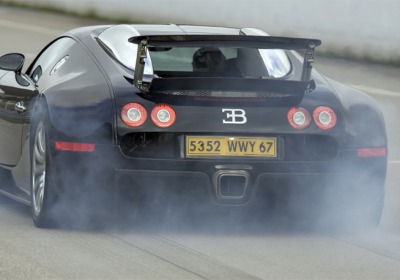Bugatti Veyron - the new super-Bug to hit 288mph
Mon, 10 Dec 2012
Bugatti is preparing a new SuperVeyron for launch in 2013 - and CAR has uncovered fresh details on the new higher-performance Veyron. Like its 288mph top speed. A 0-62mph time to worry an F1 car's. And an even richer confection of carbonfibre to trim the Bug's lardy kerbweight.
Although not even the new McLaren P1 can out-Veyron the Veyron, the ultra high-end VW division decided to raise the bar again to give the car a fitting send-off.
More power for the Bugatti Veyron? The least required power boost ever?According to the Molsheim grapevine, the horseshoe brand will at the 2013 Frankfurt motor show release the SuperVeyron.
As usually driven by grandseigneur Ferdinand Piech himself, the UltraBug gets a beefed-up quad-turbo W16 engine, which some sources suggest may be bored out from 8.0 litres to 9.6 litres.
It is said to deliver in kilowatts what the current cream-of-the-crop unit produces in bhp. Make that 1600bhp, which is enough to see the maximum speed soar from 431 to an unreal 460kph (268 to 288mph). The rumoured acceleration time from 0-62mph is 1.8sec, which would better the Ferrari Enzo replacement and which would make Sebastian Vettel's Red Bull racer a real impediment when the lights turn green.
Bugatti Veyron: a super-light modelThe secret to all this extra performance is a weight-saving of almost 250 kilos over the SuperSport W16. At 1600 kilos, the limited-edition Veyron Evo for the super-mad and super-rich achieves a dream power-to-weight ratio of one kg/bhp.
Expect in principle the same tub but completely new front and rear ends with even more sophisticated active aerodynamics. The price? In excess of €2 million.
Who said the supercar was dead? Just because petrol costs these days more per litre than a decent Cote du Rhone? Or because electromobility is looming large in the minds of politicians and visionaries? Despite all those BEVs, REXs and PHEVs, the supercar is alive and kicking.
By Georg Kacher



